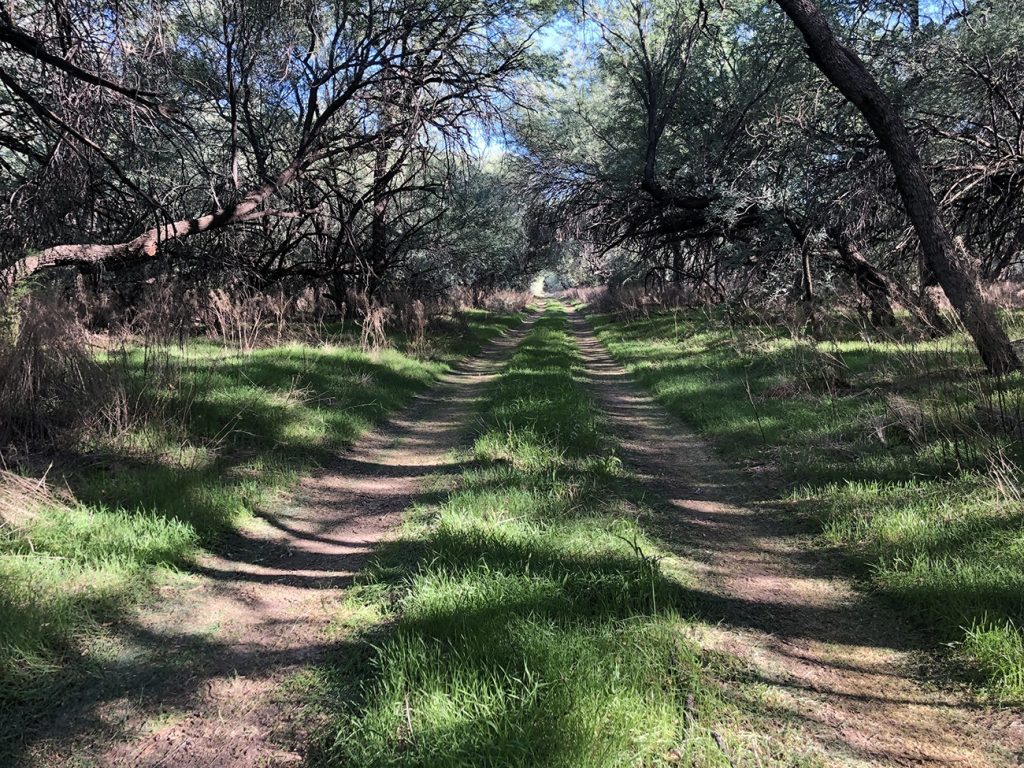A partnership between WestLand Resources, Inc., Tonto National Forest Tribal Monitors, The Nature Conservancy, and Resolution Copper to improve habitat for the monarch butterfly

An old agricultural road cuts through the mesquite bosque at the 7B ranch where monarchs have been observed as recently as 2019.
The monarch butterfly (Danaus plexippus) is in decline, according to numerous recent studies, notably the Western Monarch Butterfly Conservation Plan 2019-2069. During 2018 and 2019, fall migration numbers for monarchs fell to historical lows (Pelton et al. 2019). The monarch is under consideration for listing as a federally Endangered Species, with a listing decision due in December 2020.
Milkweed is the sole host plant for monarch caterpillars. In 2019, WestLand Resources, Inc. (WestLand) teamed up with the Tonto National Forest (TNF) Tribal Monitor Program and The Nature Conservancy to begin planting native milkweeds at the 7B Ranch, a conservation property near Mammoth, Arizona, owned by Resolution Copper and managed by The Nature Conservancy.
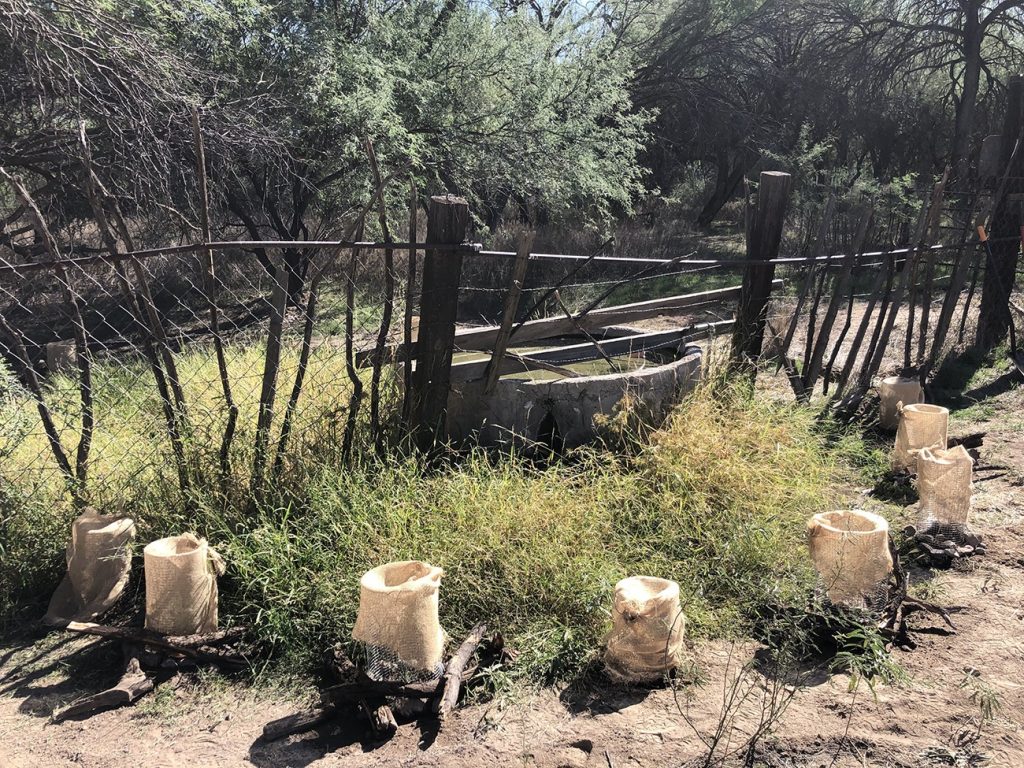

The “Dragonfly Drinker” with installation of milkweed transplants. Wire cages (under burlap shade cloths) are a recommend measure for protecting live transplants.
Arizona rarely sees large numbers of monarchs, but the state’s warm temperatures and presence of native milkweed species make it an essential area for monarch butterflies. The Southwest Monarch Study is a leading provider of information and protocols for monarch conservation work and citizen science. They provide a host of valuable information about how organizations and individuals can get involved. Especially helpful is their introduction to native milkweeds in Arizona and how to grow them. The Arizona Game and Fish Department has also mobilized to plant milkweeds and restore monarch habitat (read about AZGFD monarch efforts here).
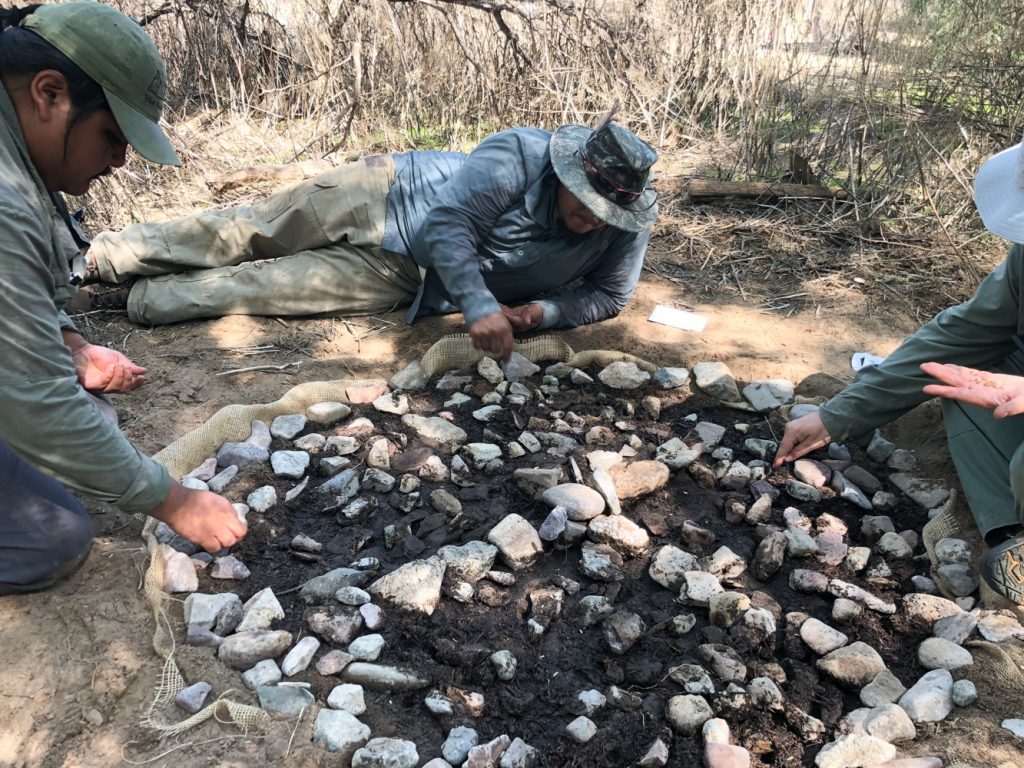

TNF Tribal Monitors, Lance Wells (left) and Selwyn Selina (center), with WestLand Biologist, John Melko (right). Various seed plot designs were implemented including this medicine wheel-style design.
The project focused on areas that were previously disturbed by agriculture and showed the most promise for successful milkweed plantings. In total, we planted 22 live plants purchased from Desert Survivors Nursery in Tucson. The semi-saturated soils around “Dragonfly Drinker” at 7B Ranch seem to provide the ideal moisture for the two species chosen from the nursery — Arizona milkweed (Asclepias angustifolia) and western whorled milkweed (Asclepias subverticillata). We amended the soil before transplant and installed hardware cloth a foot deep around each plant to exclude gophers and other milkweed predators.
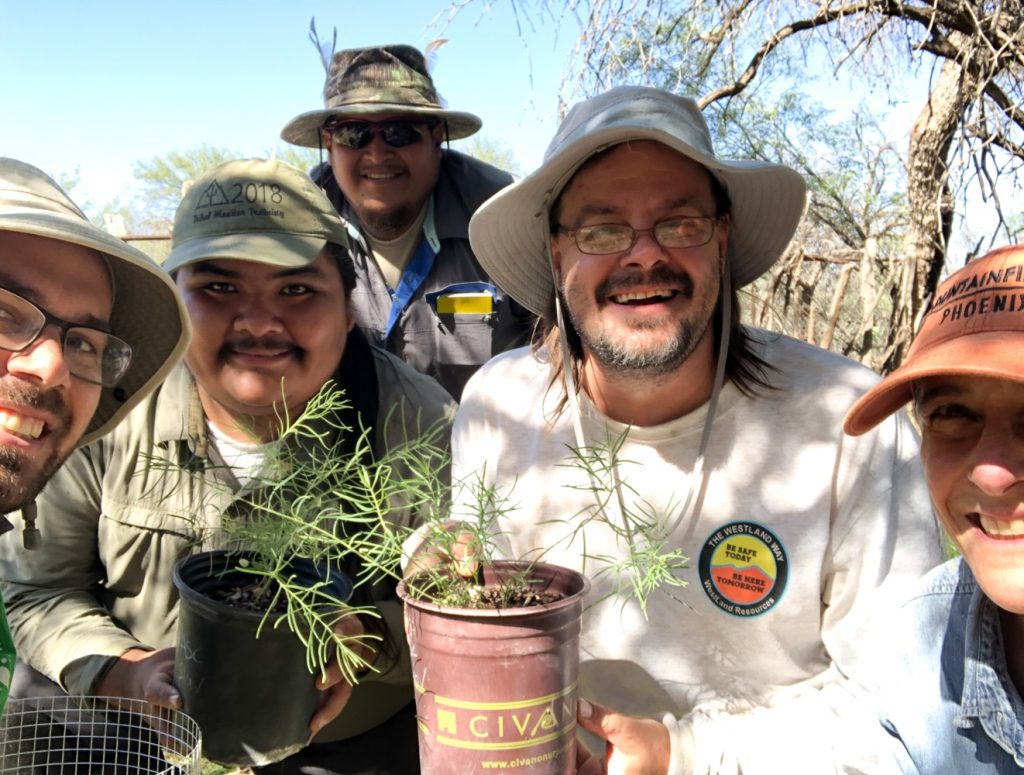

Western whorled milkweed (Asclepias subverticillata) about to be transplanted. From left to right, Daniel McNair (WestLand), Lance Wells (TNF Tribal Monitor), Selwyn Selina (TNF Tribal Monitor), John Melko (WestLand), and Celeste Andresen (Nature Conservancy).
Along with live plantings, we established ten seeding plots on the 7B property. We seeded them with approximately 1,200 hand-buried milkweed seeds purchased from Native Seed SEARCH and wild-harvested by Borderlands Restoration from native milkweed species occurring in southern Arizona.
The 7B Ranch is a registered Monarch Waystation through monarchwatch.org, another excellent resource for information on monarch conservation and habitat restoration.
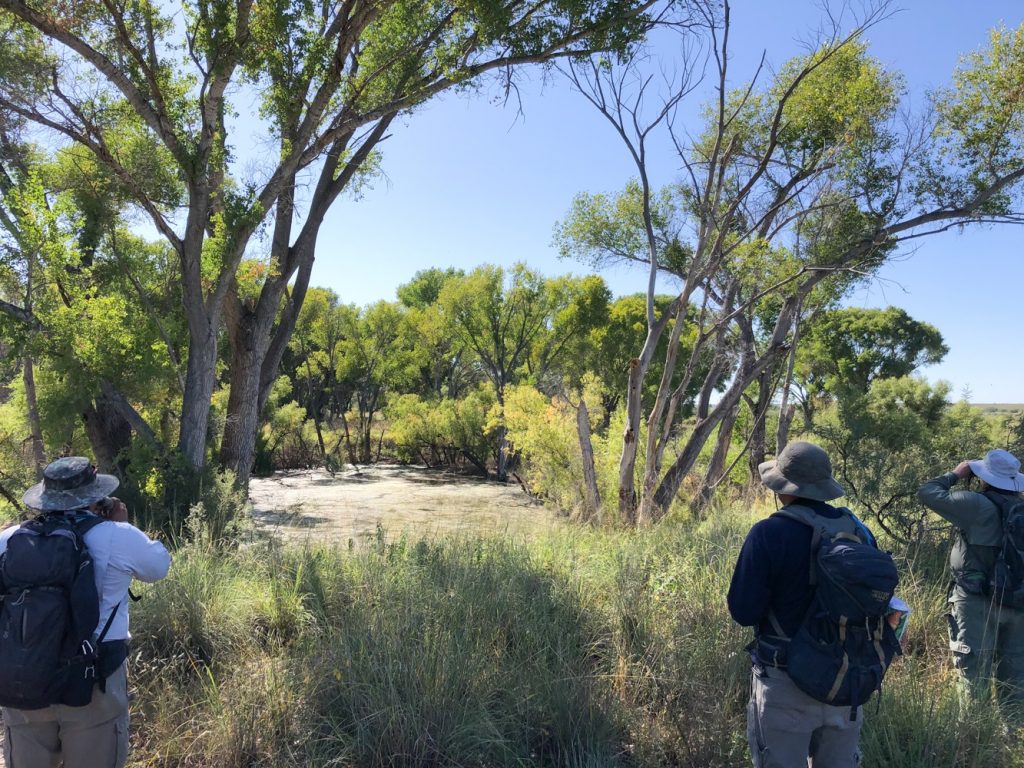

TNF Tribal Monitors, Selwyn Selina and Joaquin Leonard, with WestLand Biologist, John Melko, surveying for butterflies in the BLM San Pedro Riparian National Conservation Area.
Have a monarch sighting to report? Consider reporting your sightings to the Southwestern Monarch Study through their iNaturalist project page: https://www.inaturalist.org/projects/southwest-monarch-study-sightings.


